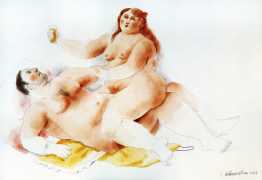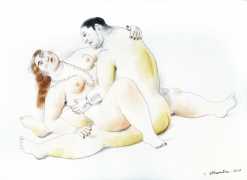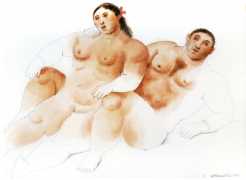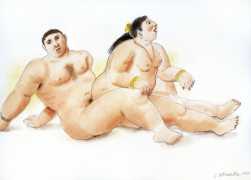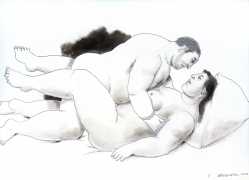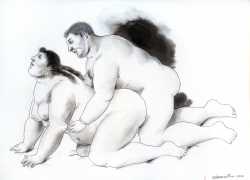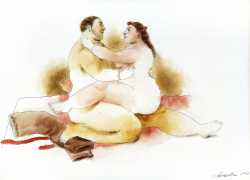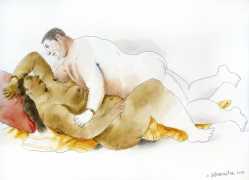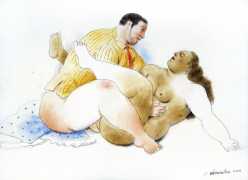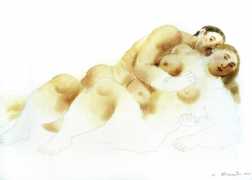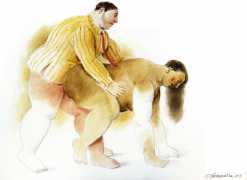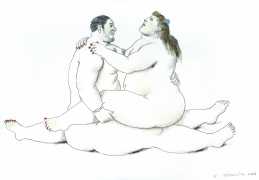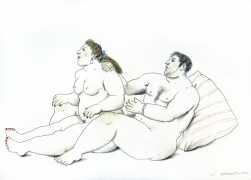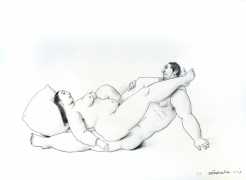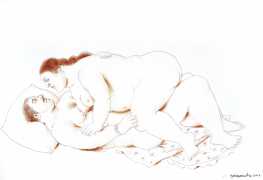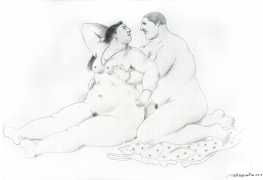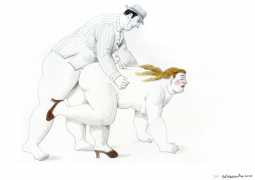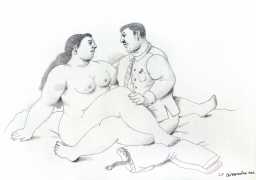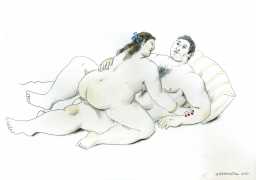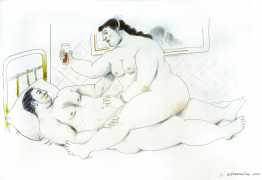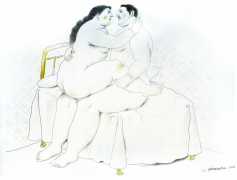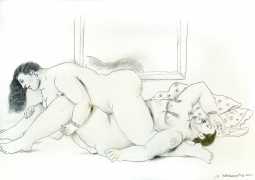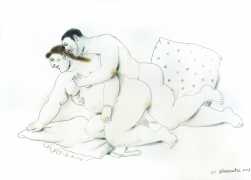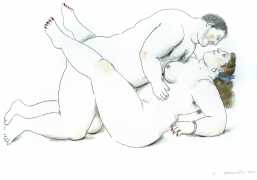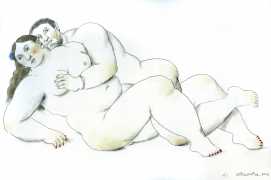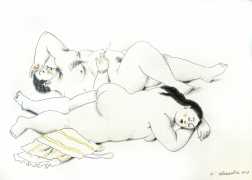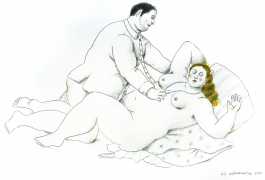 ‘This collection of drawings and paintings suggests intimate moments created by Botero, conveying his own ideas of eroticism.’ This is how the curator of the Boterosutra exhibition in Antiquoia, Camilo Castaño Uribe, explained the purpose of Boterosutra when it opened there in 2014 after being exhibited in Switzerland, Germany and France. ‘It reflects eroticism, sensuality, love and the intrinsic sexuality of human beings,‘ he went on, ‘but moves away from a moral aspect and exalts the tactile values of the erotic encounter. It is a sensory emotion that is not specifically linked to producing pleasure of a sexual nature, but rather an aesthetic pleasure. In the process of creating these works, Botero read treatises on sex and love including the Kamasutra, and made his own free version. He did not intend to copy it, more to take it as a theme or his painting and drawing’.
‘This collection of drawings and paintings suggests intimate moments created by Botero, conveying his own ideas of eroticism.’ This is how the curator of the Boterosutra exhibition in Antiquoia, Camilo Castaño Uribe, explained the purpose of Boterosutra when it opened there in 2014 after being exhibited in Switzerland, Germany and France. ‘It reflects eroticism, sensuality, love and the intrinsic sexuality of human beings,‘ he went on, ‘but moves away from a moral aspect and exalts the tactile values of the erotic encounter. It is a sensory emotion that is not specifically linked to producing pleasure of a sexual nature, but rather an aesthetic pleasure. In the process of creating these works, Botero read treatises on sex and love including the Kamasutra, and made his own free version. He did not intend to copy it, more to take it as a theme or his painting and drawing’.
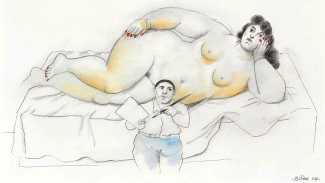
Catalogue writers and critics have worked hard to place Botero’s influences and allusions, inevitably including Pablo Picasso, Jean-Honoré Fragonard, Titian and Rubens. The truth is that Fernando Botero is his own artist, fascinated and informed by paintings through the ages but exploring the human form and the strange variety of human activities with a unique vision. Boterosutra is his tender, witty interpretation of the variety of intimate encounters between a large woman and an equally large man.
Boterosutra was published by the Swiss gallery Galerie Gmurzynska as a portfolio containing fifty prints on thick card.


